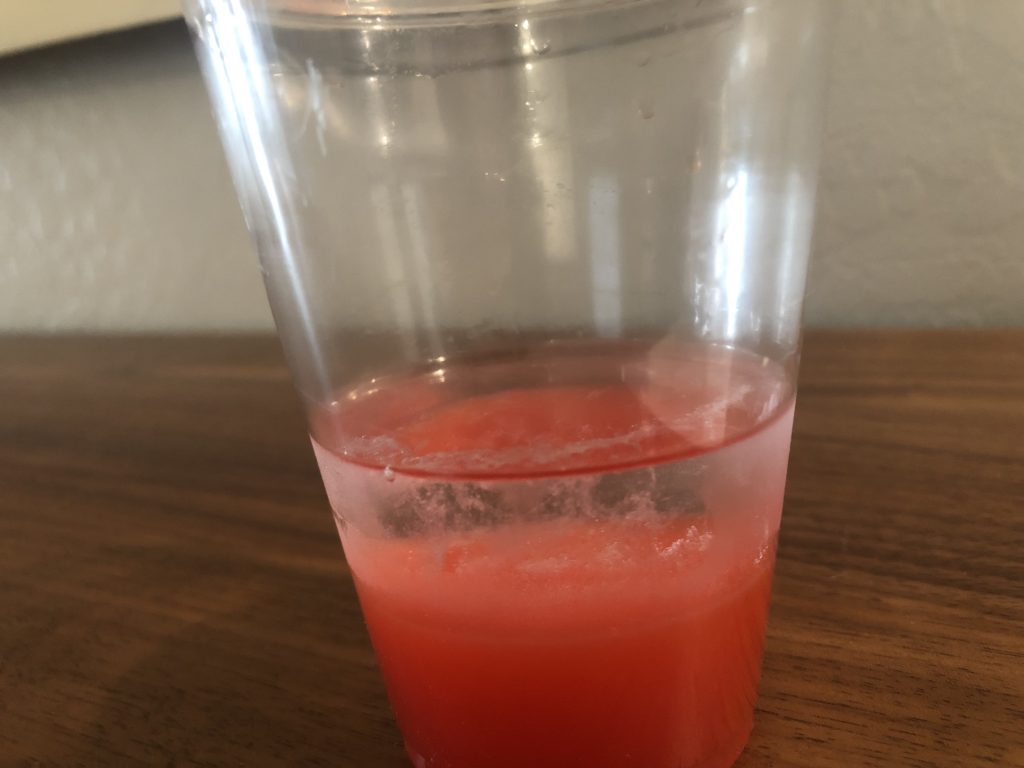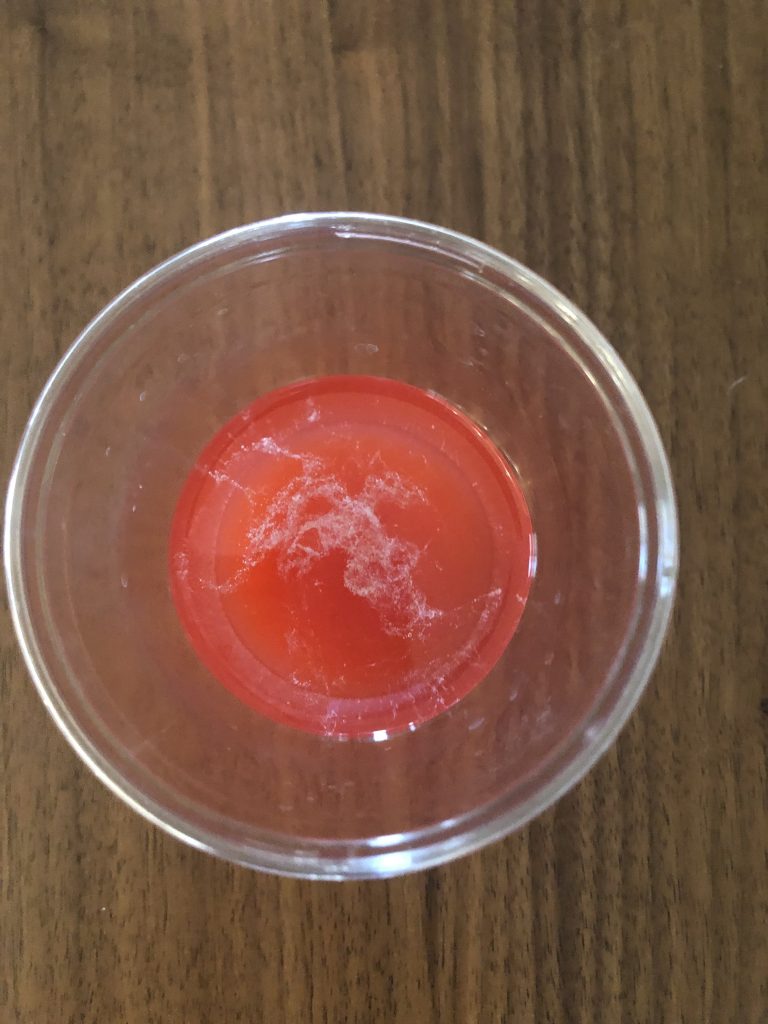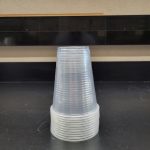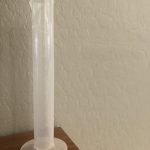DNA EXTRACTION
LEARNING OBJECTIVES
Extract DNA from plant cells.
Explain the purpose of each step in DNA extraction.
Observe DNA with the naked eye.
MCCCD OFFICIAL COURSE COMPETENCIES
Describe the processes of microbial genetics, mutations, and DNA recombination.
NOTES
Strawberries yield more DNA than any other fruit because they are octoploid which means they have eight of each type of chromosome. Other fruit options include peeled kiwi, papaya, banana, and mango.
Store the isopropyl alcohol in the freezer for at least 60 minutes prior to use (overnight produces significantly better results).
PHOTO REQUIREMENTS
Take a photo with your photo ID during the lab exercises when you see this icon.

Paste the photo in the DNA Extraction Questions Document.
INTRODUCTION
Nucleic acids are one of the macromolecules of life along with carbohydrates, proteins, and lipids. Deoxyribonucleic acid (DNA) and ribonucleic acid (RNA) are nucleic acids. Like all macromolecules nucleic acids are made of building blocks or monomers. The monomer of nucleic acids is nucleotides. Nucleotides are composed of deoxyribose sugar, a phosphate group, and a nitrogenous base. The sugar is deoxyribose in DNA and ribose in RNA.
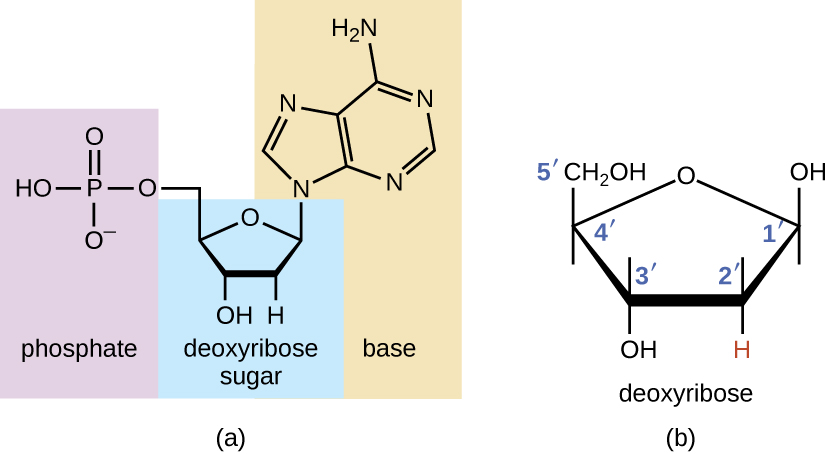
There are four nitrogenous bases in DNA: adenine, guanine, cytosine and thymine. In DNA adenine pairs with thymine and cytosine pairs with guanine. DNA is a double stranded molecule that resembles a spiral staircase. The sides of the staircase are composed of deoxyribose and phosphate groups. Each step of the spiral staircase is made of two nitrogenous bases. DNA is present in every cell. In a prokaryotic cell DNA is located in the cytoplasm. In a eukaryotic cell DNA is located in the nucleus.
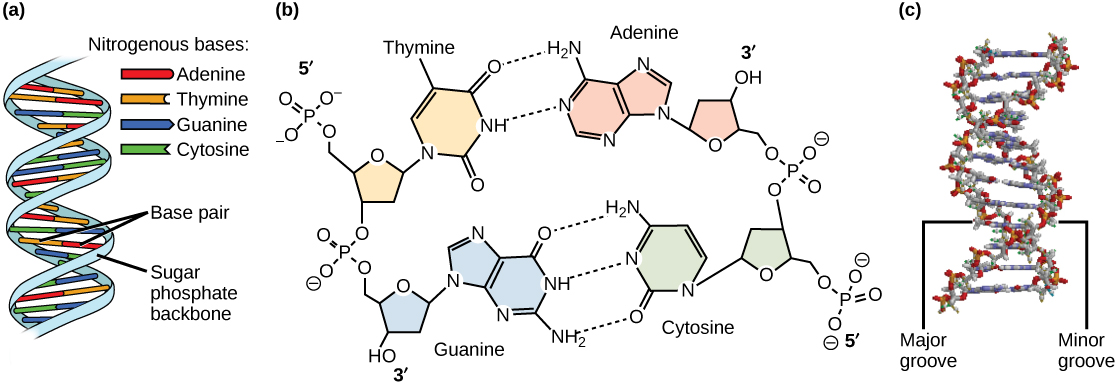
Prior to a prokaryotic cell dividing by binary fission or a eukaryotic cell dividing by mitosis, DNA replicates so that each daughter cell receives a complete copy of the genetic material. DNA replication takes place in the cytoplasm of a prokaryotic cell and in the nucleus of a eukaryotic cell. During DNA replication, the DNA double helix unwinds and unzips. Both of the original DNA strands act as templates; basically, the original DNA strands are traced so no mistakes are made. The nitrogenous base pair rule is of course still in effect. DNA replication is semi-conservative. When DNA replication is complete, each DNA molecule is half old half new.
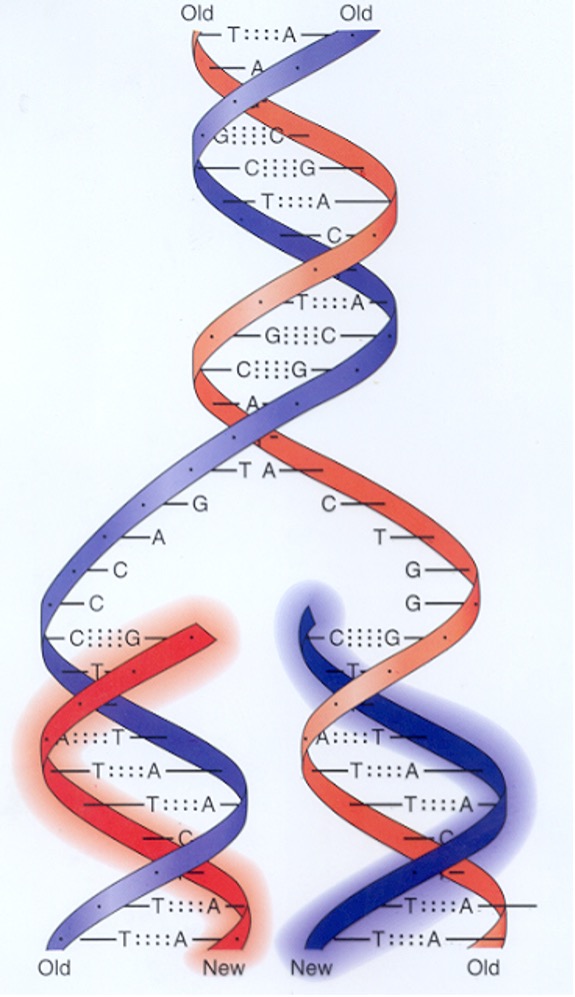
Flow of information from DNA–>RNA–>PROTEIN is the central dogma of biology. A dogma is a principle or set of principles laid down by an authority as incontrovertibly true. Flow of information in a cell explains how DNA becomes E. coli, a herpes virus, Giardia lamblia, or you. The process of DNA being converted to mRNA is known as transcription. In transcription one of the two DNA strands will serve as a template to produce single stranded mRNA. The process of mRNA being converted to protein is known as translation. In translation the mRNA sequence is “read” three nucleotides (codon) at a time. Each codon specifies a particular amino acid. The mRNA sequence is thus used as a template to assemble the chain of amino acids that form a protein.
The first step in obtaining DNA from any organism is to release the DNA from a cell. In this lab we will be extracting DNA from soft fruit. Mashing the fruit helps break down cell walls and cell membranes. We will then add DNA extraction solution that contains detergent and salt. The detergent in the DNA extraction solution helps to dissolve the cell membrane thus releasing DNA, RNA, and proteins from inside of the cell. DNA has a negative charge due to the phosphate groups present in DNA. DNA molecules repel each other due to their overall negative charge. Think about how magnets repel if you try to push together two of the same poles. When salt is added, the positively charged sodium ions are attracted to the negative charges of the DNA molecule, neutralizing the negative charge of the DNA. This allows the DNA molecules to come together instead of repelling each other. When molecules are soluble, they are dispersed in the solution and are therefore not visible. When molecules are insoluble, they precipitate (clump together) and become visible. DNA is soluble in water but not in alcohol; therefore, when alcohol is added, it forces the DNA out of the solution. Molecules are less soluble at lower temperatures, so we chill the alcohol to get more of the DNA to precipitate. In this experiment, you will use soft fruit (strawberries, kiwi, mango, banana, papaya) to extract DNA.
DNA EXTRACTION FROM FRUIT PROCEDURE
| REQUIRED SUPPLIES FROM THE LAB KIT |
| Plastic cup (1)
|
| Rubber band (holding the swabs and pipettes in the lab kit) |
| 100 ml graduated cylinder
|
| REQUIRED SUPPLIES YOU PROVIDE |
| Ice Cold isopropyl alcohol (store the alcohol is the freezer for at least 60 minutes prior to use, overnight will produce significantly better results) |
| Paper towels |
| Soft fruit-6 fresh or frozen strawberries or half a peeled banana or 2 peeled kiwi or half a peeled mango or half a peeled papaya |
| Sharp knife |
| Hot water (tap is fine) |
| Resealable sandwich bag or quart bag |
| Measuring spoons |
| Liquid dish soap or liquid laundry detergent or liquid hand soap or liquid shampoo or liquid body wash (1/4 teaspoon) |
| Salt (iodized, non-iodized, or kosher 1/2 teaspoon) |
| Measuring cup |
| Spoon |
| Timer, stopwatch, or cell phone |
| Cell phone or camera to take photos |
| Cup or bowl for surface disinfectant |
| Bleach |
| *Coffee filter is optional (paper towel can be used instead of a coffee filter) |
Please watch the brief video guide below and read all instructions carefully before you start the lab exercise.
Experiment Video Guide
1. Wash your hands thoroughly with soap and water. Dry your hands with paper towel.
2. Prepare surface disinfectant. Using the 100ml graduated cylinder add 180 ml of tap water to a cup or bowl. Using the 100 ml graduated cylinder now add 20 ml of bleach to the cup or bowl. The surface disinfectant (10% bleach solution) is now ready to use.
3. Disinfect your work surface with the surface disinfectant by applying surface disinfectant with a paper towel, allowing it to remain damp for 2 minutes, and then wiping away any remaining disinfectant with a dry paper towel. Throw the used paper towels in the trash.
4. If you are using strawberries, cut the green stem off the top, use the knife to chop the berries into small pieces. If you are using a banana, peel the banana, use the knife to chop half the banana into small pieces. If you are using two kiwi, peel the kiwi. Use the knife to chop the kiwi into small pieces. If you are using papaya or mango, peel the fruit. Using the knife chop half of the papaya or mango into small pieces.
5. Add the chopped fruit to the resealable bag and close the bag.
6. On a hard surface like a tabletop or counter, mash the fruit in the bag for 2 minutes. Do not mash the fruit too close to the bag’s seal, this could cause the seal to open and the fruit to squirt out and make a mess.
7. Measure a 1/4 cup of HOT water, add it to the bag and close the bag.
8. Measure 1/2 teaspoon of salt, add it to the bag and close the bag.
9. Gently mix and slosh the salt, water, and fruit together for 2 minutes. Try to not make bubbles.
10. Measure 1/4 teaspoon of liquid dish detergent (or liquid laundry detergent or liquid soap or liquid shampoo or liquid body wash), add it to the bag and close the bag.
11. Gently mix and slosh the salt, water, fruit, and dish detergent together for 1 minute. Try not to make bubbles or have the mixture become foamy.
12. Place a piece of paper towel (or a coffee filter) into a small cup. Fold the top of the paper towel (or coffee filter) over the rim of the cup and secure it with a rubber band.
13. Carefully pour some of the contents of the bag into the paper towel (or coffee filter). Let it sit for several minutes until the liquid has dripped into the cup. You may use a spoon to gently stir the fruit mash to increase the speed of the liquid drip. Be careful do not rip the paper towel (or coffee filter). Repeat this process until all the contents of the bag have dripped through the paper towel (or coffee filter).
14. Dispose of the zipper bag and paper towel (or coffee filter) in the trash.
15. Remove the alcohol from the freezer. Tilt the cup containing the fruit mash. Slowly pour an equal amount of ice cold isopropyl alcohol down the side of the cup so that the isopropyl alcohol forms a layer on top of the fruit mash. Do not stir anything! Let the cup sit at room temperature for up to 30 minutes. You will see white strands come together and float to the top of the alcohol. This is the DNA.
16.  Take a photo with your photo ID showing the extracted DNA. This photo will be pasted into the DNA Extraction Questions Document.
Take a photo with your photo ID showing the extracted DNA. This photo will be pasted into the DNA Extraction Questions Document.
17. Pour the contents of the cup down the sink. Let the water run for at least 30 seconds to dilute the alcohol. Dispose the cup in the trash.
18. Disinfect your work surface with the surface disinfectant by applying surface disinfectant with a paper towel, allowing it to remain damp for 2 minutes, and then wiping away any remaining disinfectant with a dry paper towel. Throw the used paper towels in the trash. Dispose of left over surface disinfectant by pouring it down the sink and running water for at least 30 seconds.
19. Wash your hands thoroughly with soap and water. Dry your hands with paper towel.
